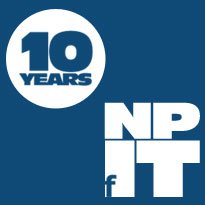National Choose and Book usage has dropped below 50% and is just 25% in some areas.
Usage of the e-booking system reached a high of 57% in March 2009 and remained at that level for around two years, but has now dropped below 2008 levels.
The decline has been linked to the end of GP funding for using the electronic referral system. A Department of Health spokesperson told eHealth Insider the national usage of C&B for GP referrals to first outpatient appointments in March 2012 was 49%.
The latest DH figures show NHS South West is the strategic health authority area with the highest usage at 77%, while NHS South East Coast has the lowest at 25%.
Figures for the remaining SHAs are; North East, 71%; North West, 52%; Yorkshire and the Humber, 51%; East Midlands, 75%; West Midlands, 36%; East of England, 50%; London, 37%; South Central, 34%.
GP funding for use of Choose and Bookwas first provided through a national directed enhanced service and then followed up with local enhanced service payments in many primary care trusts.
Payments ranged from about 50p to about £4 for every patient booked through C&B. More than a third of trusts offering a LES removed payments in 2010-11.
Joint chairman of the BMA and RCGP’s joint IT committee, Dr Paul Cundy, said that while some GPs think C&B is brilliant “a lot don’t.”
Dr Cundy told EHI that two issues made the project less successful than it should have been. The first was the government’s insistence on the ‘choose’ part of C&B.
Dr Cundy argued that a simple e-booking system would have been taken up “very, very enthusiastically”, but the “choose” part was a political initiative.
He said the other problem was the way in which trusts can “manipulate the appointments” to manage their own workload, which means GPs “don’t have trust in the system”.
The system was launched in July 2004, with ambitious early plans calling for the system to be fully implemented across England by the end of 2005.
In January 2008, usage hit 50% and it reached a high of 57% in March the following year. But In January last year, the DH downgraded the target for the proportion of appointments made through the e-booking system to "a useful guide.”
A DH spokesperson told eHealth Insider the department is working closely with the local NHS to improve the use of C&B and remains committed to seeing the system embedded into daily clinical practice.
A new consultation paper released this month – ‘Liberating the NHS: No decision about me, without me’ – says the DH is also looking at developing the e-booking system and NHS Choices so that patients can book directly through C&B.
The document says that where C&B is not being used, “formal requirements to support greater choice for patients will have to be met by alternative, potentially labour intensive, methods.”
EHI commenters responded saying that the system is time consuming, has poor functionality and is a “complete waste of time” because hardly any appointments are made available by the hospitals; although one argued that when implemented properly it is a “great time saver.”
Read more about the NPfIT projects that affected primary care in this week’s Insight section, as part of our series marking the programme’s tenth anniversary.

